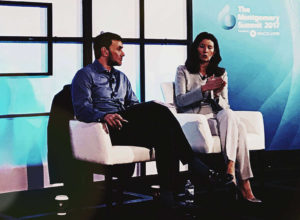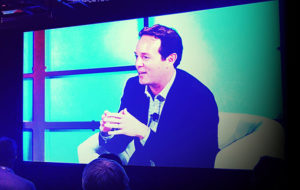To foster innovation, executives need to be responsive as well as decisive.
At a time when “having no life is the new aspirational lifestyle,” as Harvard Business School Working Knowledge recently reported, Spencer Rascoff is marching proudly in the opposite direction. Rascoff, the CEO of Zillow Group, likes to “go off the grid” from time to time, and pointedly instructs his team not to contact him for any reason. If a problem arises, they have to handle it without him.
“I try to create an environment that allows the team to make decisions,” Rascoff said at the recent Montgomery Summit, in Santa Monica. He does this, he explained, by making “people and culture” his top priorities.
The Montgomery Summit convenes annually “to explore and celebrate the innovation economy.” The word innovation usually conjures images of technology, but some of the most intriguing presentations we saw focused on human capital, the most important resource in the innovation economy. Whether that resource is renewable depends on the decisions leaders make for the organization’s short and long-term.

“Leadership is having a clear mission,” Rascoff said. That message was echoed by Nancy Altobello, Global Vice Chair for Talent at EY (Ernst & Young). “You need to be purposeful as an organization,” Altobello explained, in order to attract the best talent. (Read more about her views on purpose-driven leaders here.)
“The new leader is not a manager but an influencer,” said Keith Ferrazi, Founder & Chairman of Ferrazzi Greenlight and Yoi. And the new org chart, he added, is the relationships across workflows that result from cross-collaborative teams.
Mike Kriak, COO of Mashable.com, explains they are focused on enabling leaders outside Mashable to be influencers. Mashable created a platform called “Velocity.” First, the platform deeply analyzes their target audience for insights and predicts what they will share. Next, Mashable creates custom beautiful video content to equip their influencers to share and promote the Mashable “vehicle.” Essentially, Mashable collaborates with their outside leaders and is focused on fostering those relationships.
That resonated with us. At Nottingham Spirk, everything we do is about harnessing the power of collaboration — with our partners, of course, but first within the teams we assemble for every new project. We’ve always invested first in human capital and the tools that people need to do their jobs.
Organizations of all sizes live or die on the strength and adaptability of their teams. That’s why we were surprised to hear, from Altobello, that 30 percent of global business today involves remote teams and vendors. We maintain relationships with manufacturers overseas, but every stage of our process, from helping partners realign their resources to commercialization, is overseen by one or more of the 70-plus associates working out of our Innovation Center in Cleveland. We travel a lot, but we always return home to consult with our colleagues and plan for the next step. In our experience, there is no substitute for regular personal interaction.
Even IBM, a pioneer in remote working, is coming around to the value of proximity. The company recently informed its far-flung marketing associates that they now need to work out of one of six locations, because “there is something about a team being more powerful, more impactful, more creative, and frankly hopefully having more fun when they are shoulder to shoulder.”
We agree that a central location suited to the organization’s mission is vital, but there’s more to it than that. It’s not about keeping an eye on people or trying to enforce productivity; it’s about renewing the sense of shared purpose every day. Leadership trends come and go, but in our four-plus decades we’ve enjoyed tremendous success by focusing on a few fundamentals: hiring thoughtfully, cultivating a culture in which creativity can flourish, and encouraging a healthy work-life balance.
At Montgomery Summit, Rascoff also talked about “servant leadership,” which is neither an oxymoron nor a jab at the importance of executives (read more about it here). To build and retain teams of creative, motivated people, leaders need to listen as well as speak, give as well as demand, and defer as well as direct. In the innovation economy, this sort of internal agility is at least as important as the ability to read and react to ever-shifting market landscapes.
Contact Nottingham Spirk to discuss how your organization can take innovation to the next level.
About us: Nottingham Spirk is a business innovation and product design firm with an unrivaled record of delivering disruptive consumer goods, medical devices, and packaging design solutions to market. We collaborate with Fortune 1,000 companies, funded start-ups and non-profit organizations to discover, design and execute product programs and strategic business platforms that will wow customers, grow markets and generate new revenue streams. Learn more about what makes us different here.



